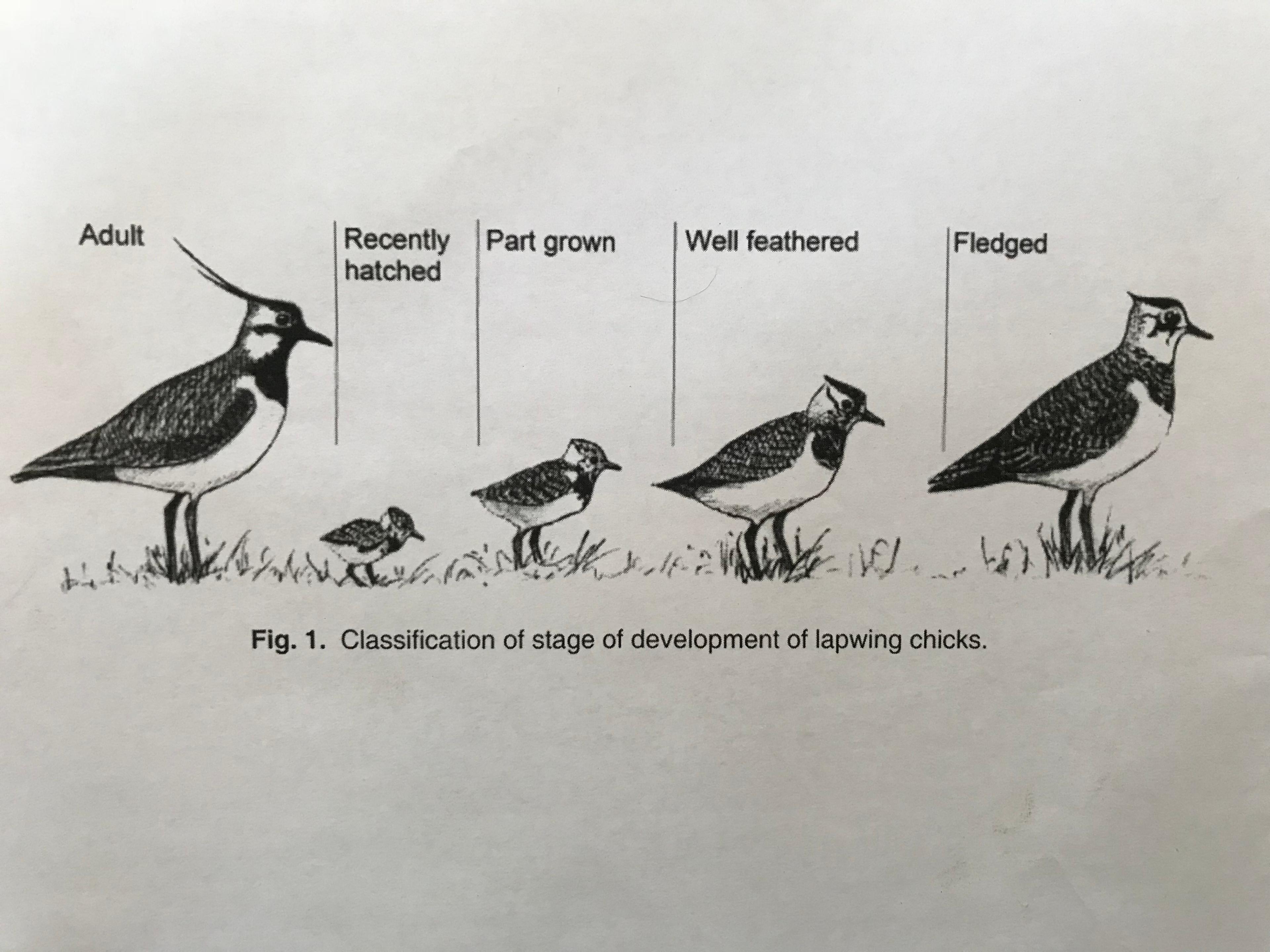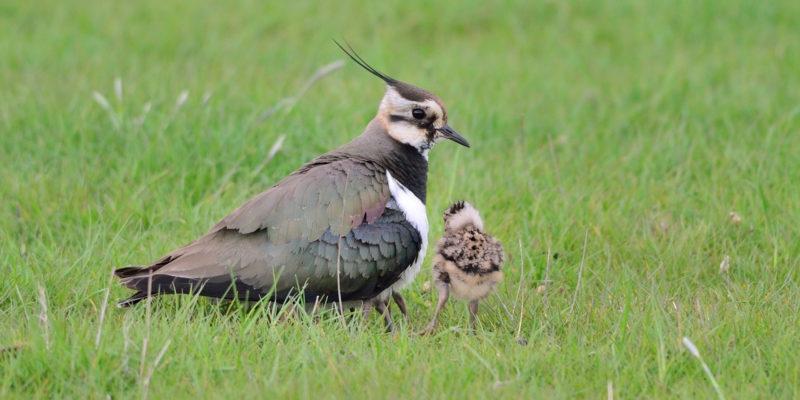- 19/07/2018
- Nature Notes
2018 has been a brilliant breeding season for lapwing, redshank and host of other ground nesting birds at Elmley.
353 pairs of lapwing managed to fledge over 467 chicks between April and July, a productivity of 1.3 chicks fledged per brood. An incredible result! The detail below show the full story as recorded by independent surveyors, led by Mr R. Poppe, using the Bolton et al methodology - one count every 3 weeks undertaken five times over the breeding season.
BREEDING LAPWING SURVEY RESULTS FOR ELMLEY NATIONAL NATURE RESERVE - APRIL TO JULY 2018
2018 has been a brilliant breeding season for lapwing, redshank and host of other ground nesting birds at Elmley. 353 pairs of lapwing managed to fledge over 467 chicks between April and July, a productivity of 1.3 chicks fledged per brood. An incredible result! The detail below show the full story as recorded by independent surveyors, led by Mr R. Poppe, using the Bolton et al methodology - one count every 3 weeks undertaken five times over the breeding season.
The surveyors systematically cover the whole 3000 acres of wet grazing marsh at Elmley NNR in an effort to identify adult lapwing and their chicks at each stage of development from individual adults to nesting and through chick development to fledging using a peer reviewed and recommended methodology created by Bolton et al.
Despite the harsh weather of March, when birds were trying to establish territories and pair up, and the large volumes of rainfall in April and May the lapwing appear to have thrived. To put the results in some perspective the target fledging rate for a stable lapwing population is 0.7 chicks per brood and a normal site would hold between 20-50 pairs.
Our results of 353 pairs fledging 467 chicks is the best we have achieved since beginning thorough surveys 10 years ago. The weather plays a critical role but to achieve these results the habitat including water levels, sward height and density, micro-topography etc has to be right. In addition, these ground nesting birds benefit from low densities of key predators including foxes, corvids, stoat and hedgehog (voracious eggs eater which are live trapped and relocated to suitable local habitat).
Bolton et al methodology - | ||||||
Surveyor - Mr R. Poppe and R. Brookes | ||||||
| Period 1 | Period 2 | Period 3 | Period 4 | Period 5 | ||
| 09-13/04/2018 | 01-05/05/18 | 21-25/05/18 | 11-15/06/18 | 02-04/07/18 | ||
Birds | 693 | 620 | 549 | 331 | 43 |
|
Birds Alarming/Behaving as if with Chicks | 0 | 27 | 75 | 23 | 1 | |
Birds with chicks | 0 | 232 | 178 | 93 | 1 | |
Chicks | 0 | 559 | 25 | 24 | 0 | |
Chicks Part grown | 0 | 3 | 101 | 8 | 2 | |
Chicks well feathered | 0 | 0 | 98 | 10 | 2 | |
Chicks Fledged | 0 | 0 | 42 | 350 | 75 | |
Birds sitting on eggs | 173 | 50 | 10 | 0 | 2 | |
| Elmley NNR Totals | 353 | |||||
| Fledged chicks | 467 | |||||
| Total productivity | 1.32 |
|||||

Other Ground Nesting Bird Counts
These figures are recorded during the Lapwing survey and indicate breeding adults as total numbers or singing/displaying males. Redshank are clearly a outstanding success too with over 500 adult birds recorded the marshes were literally covered in broods of redshank chicks this Spring.
| Dates | 09-13/04/2018 | ||||||
| Redshank | Oystercatcher | Yellow Wagtail | Skylark | Ring Plover | Avocet | ||
| male | singing male | ||||||
| Elmley | 415 | 87 | 7 | 42 | 2 | 114 | |
| Spitend | 97 | 28 | 0 | 20 | 0 | 6 | |
Elmley NNR Totals | 512 | 115 | 7 | 62 | 2 | 120 | |
| 01-05/05/2018 | |||||||
| Redshank | Oystercatcher | Yellow Wagtail male | Skylark singing male | Ring Plover | Avocet | ||
| Elmley | 357 | 53 | 48 | 58 | 6 | 51 | |
| Spitend | 100 | 37 | 2 | 28 | 0 | 3 | |
Elmley NNR Totals | 457 | 90 | 50 | 86 | 6 | 54 | |
| 21-25/05/2018 | |||||||
| Redshank | Oystercatcher | Yellow Wagtail male | Skylark singing male | Ring Plover | Avocet | Shoveller | |
| Elmley | 414 | 82 | 54 | 122 | 8 | 60 | 49 |
| Spitend | 122 | 40 | 6 | 47 | 0 | 10 | 28 |
Elmley NNR Totals | 536 | 122 | 60 | 169 | 8 | 70 | 77 |
| 11-15/06/2018 | |||||||
| Redshank | Oystercatcher | Yellow Wagtail male | Skylark singing male | Ring Plover | Avocet | Shoveller | |
| Elmley | 287 | 94 | 62 | 100 | 1 | 11 | 20 |
| Spitend | 110 | 23 | 7 | 23 | 0 | 54 | |
Elmley NNR Totals | 397 | 117 | 69 | 123 | 1 | 65 | 20 |
| 02-04/07/2017 | |||||||
| Redshank | Oystercatcher | Yellow Wagtail male | Skylark singing male | Ring Plover | Avocet | Shoveller | |
| Elmley | 26 | 46 | 22 | 78 | 2 | 21 | 15 |
| Spitend | 6 | 20 | 10 | 41 | 0 | 3 | 5 |
Elmley NNR Totals | 32 | 66 | 32 | 119 | 2 | 24 | 20 |
Notes for the survey methodology:
CALCULATIONS OF POPULATION SIZE, HATCHING SUCCESS
AND PRODUCTIVITY FROM SURVEY DATA
a. population size
The number of breeding pairs of lapwing is calculated as
the maximum count between mid April and the end of May
divided by two. In the example in Table 2, visit 2 and 3 were
all completed before the end of May therefore the maximum
count of adults is 12 and therefore the number of pairs is 6.
The method for estimating population size is based on
standard methodology (Barratt & Barratt 1984, O’Brien &
Smith 1992, Wilson & Brown 1999). This therefore has the
advantage of allowing direct comparisons between large
numbers of sites over many years where standard methodol-
ogy has been applied. However, it may be necessary with
historical data to correct for overestimation of population
size relating to survey time. Where it is possible to check
the time of surveys, correcting historical surveys under-
taken before 10h00 can be done (proportional difference in
population estimate = 0.006 * time of day2 – 0.21 * time
of day + 1.58).
b. Hatching success
Hatching success can be derived from the maximum count of
families across all visits divided by the number of pairs and
corrected with the following equation (hatching success % =
* max count families/pairs + 24.66). In our example,
the maximum count of families is 4; the number of pairs is 6
giving a hatching success is 36.6%. However, in Bolton et al.
(2011), the amount of variation in hatching success explained
by this measure was significant but low therefore we advocate
using this only as a crude measure to indicate poor (<40%)
or adequate (>40%) hatching success.
c. Productivity
Estimation of productivity (fledged chicks /pair) is simply
the sum of the number of well-grown and fledged chicks
across all visits divided by the number of pairs. In our ex-
ample, this leads to a productivity estimate of 0.83 (5 well-
grown and fledged chicks divided by 6 pairs).
A number points are important here:
Care must be taken to ensure that productivity estimates
are not inflated by any influx of fledglings from other
sites. For example, situations where fledged chicks are
recorded on late surveys but no or few adults with young
were counted on previous surveys should be treated with
caution.
Productivity estimates should only be calculated when all
visits in which well-grown or fledged chicks are completed
(generally visits 3–5) otherwise productivity will be under-
estimated.
